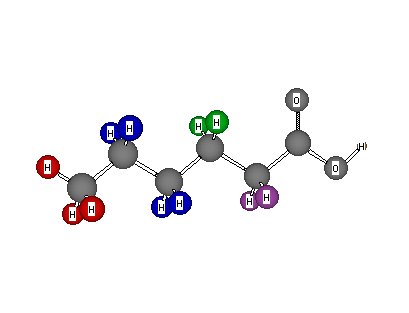Formula: C6H12O2
Answer: Hexanoic acid [Caproic acid; L. goat (due to its odor)]
Chemical Shift Assignments: δ 0.88 (3H, t), 1.29 (4H, multiplet), 1.62 (2H, pentuplet), 2.33 (2H, t), and 9.56 (1H, broad s)
The degree of unsaturation is one. Because 11 of the 12 hydrogens are at δ 2.33 and higher field, an alkane chain of five carbons is expected (C5H11-). The remaining -CHO2 can be either a formate [-O(C=O)H] or carboxylic acid group [-CO2H]. The single degree of unsaturation is here.The formate is eliminated because the oxygen atom would be bound to a carbon bearing hydrogens absorbing in the region ~ δ 4.0. There are no signals there. It may not look like there is a signal at δ 9.56. Blow it up and it rises out of the baseline as a very broad singlet in the region for a carboxylic acid hydrogen. What about that C5H11- chain? There are 8 structural isomers (draw them) of C5H11CO2H. Only one has a single methyl group with area = 3 and appearing as a triplet, that being the normal chain. Check your answer here. Thus, the answer is hexanoic acid. Note that the farther removed the carbon bound hydrogens are from the carbonyl group, the lower the δ-value is for their chemical shifts. The CH2 groups at C4 and C5 are essentially indistinguishable at 300 MHz.
The 13C NMR spectrum displays a carbonyl carbon at 180.6 ppm. The remaining methylene carbons are upfield at 34.0, 31.4, 24.5, and 22.5 ppm. The methyl group is at the highest field, 13.8 ppm. Return to Menu.
